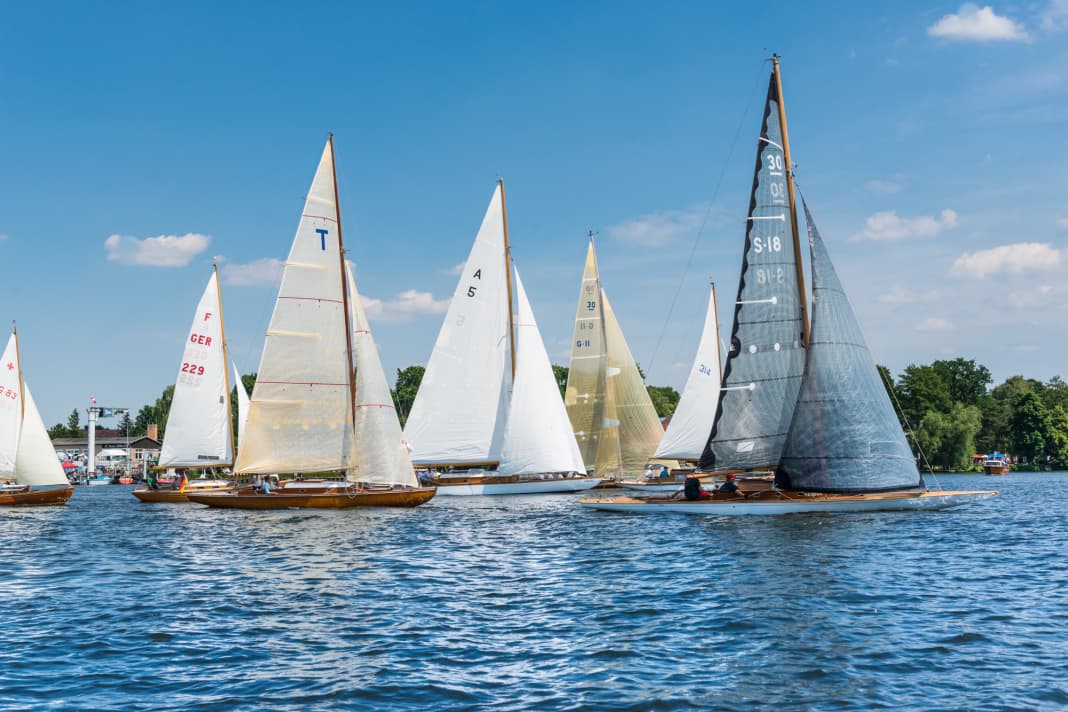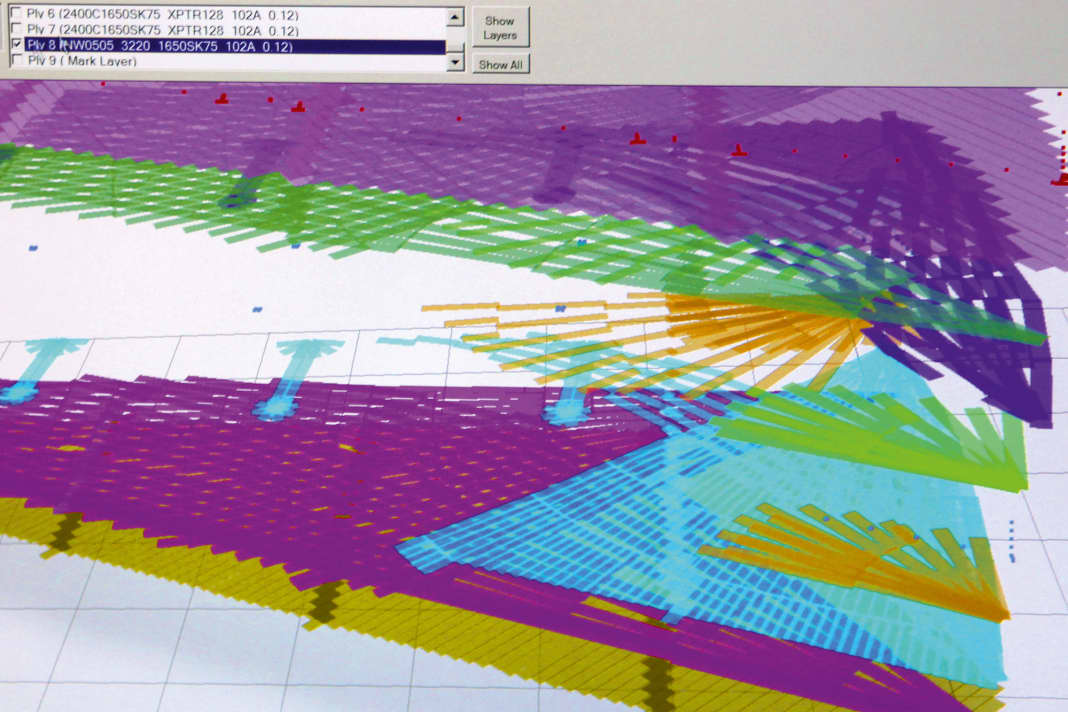




This article is part of a sailing special. The contents:
The first direction is already given by the sail shape, the outline. A wide overlapping genoa, such as those used on old IOR yachts, kites or skerry cruisers, must be produced with different materials than a slim self-tacking jib. The sailmaker speaks here of a high or low aspect ratio. If the luff and foot are at most 2.5:1 apart, for example in gaff mainsails or light wind genoas, this is referred to as low-aspect, above 3:1 as high-aspect - modern 109 per cent jibs or self-tacking jibs, for example, are of this type.
This leech ratio has a direct effect on the loads in the sail. Put simply, if all sides are the same length, the forces on the leech are the same. Based on the assumption that the sail is usually produced in a horizontal cut, also known as a crosscut, fabric manufacturers have developed appropriate materials for this.
Sails: horizontal and radial section in comparison
This is because it is simple, inexpensive and proven on many boats. The panels are sewn together almost parallel to the main boom and run perpendicular to the leech. The sailmaker utilises the fact that the weft thread running at right angles to the track has less stretch. This is because the greatest forces run diagonally from the clew and tack to the sail head. However, the cloth is poorly able to absorb forces running in the other direction.
This is better with the radial cut. The cloth panels are cut diagonally in smaller pieces to match the force distribution in the sail, making it easier for the fibres to absorb the various loads. Different cloth qualities can also be used. For example, slightly lighter cloth can be used in places with less load in order to make the sail lighter overall, but still with the highest possible profile. This depends not only on the sailmaker's experience, but also on smart software that calculates the fibre courses in the laminate so that they meet at the seams and result in something like continuous fibres from tight bonding.
Trim sails correctly:
Radial cut sails on larger yachts are also divided into two main sub-categories: Tri-radial cut and bi-radial cut. The latter is a real all-rounder, especially for furling genoas or mainsails. The tri-radial cut, on the other hand, is particularly suitable for large, slender sails and is especially popular with laminate and foil sails used in regattas. It best takes into account the course of forces in the sail.
What membrane sails are and how they are made






Horizontally and radially cut sails are generally made from rolls and are also summarised under the term "panel sails". Membranes with fibre courses individually adapted to the load curve from a single piece (3Di North Sails) or a few large pieces (Epex Elvstrøm) go one step further. If the profile of sails assembled from panels is created by rounding the edges of the cloth panels, the 3Di membrane is created directly on a positive mould. This is computer-controlled to the desired profile and so-called filament webs are laid by a special machine and then bonded under heat and vacuum without foils. The technology is patent-protected and the result is absolute premium regatta goods. Other membrane sails are assembled from laminate segments.
After great success in international offshore racing in the Vendée Globe, Ocean Race and other round-the-world races, North Sails succeeded in transferring the technology to cruising sailing in 2017. Under the product name 3Di Nordac, they launched a three-dimensionally manufactured product made from polyester fibre. The sails impressed in the first YACHT test with their clean profiling, good trimmability and high dimensional stability, even in stronger winds and when reefed. North Sails still offers the material for its Ocean 330 sails today and has also expanded and further developed its range of membrane sails for cruising.

